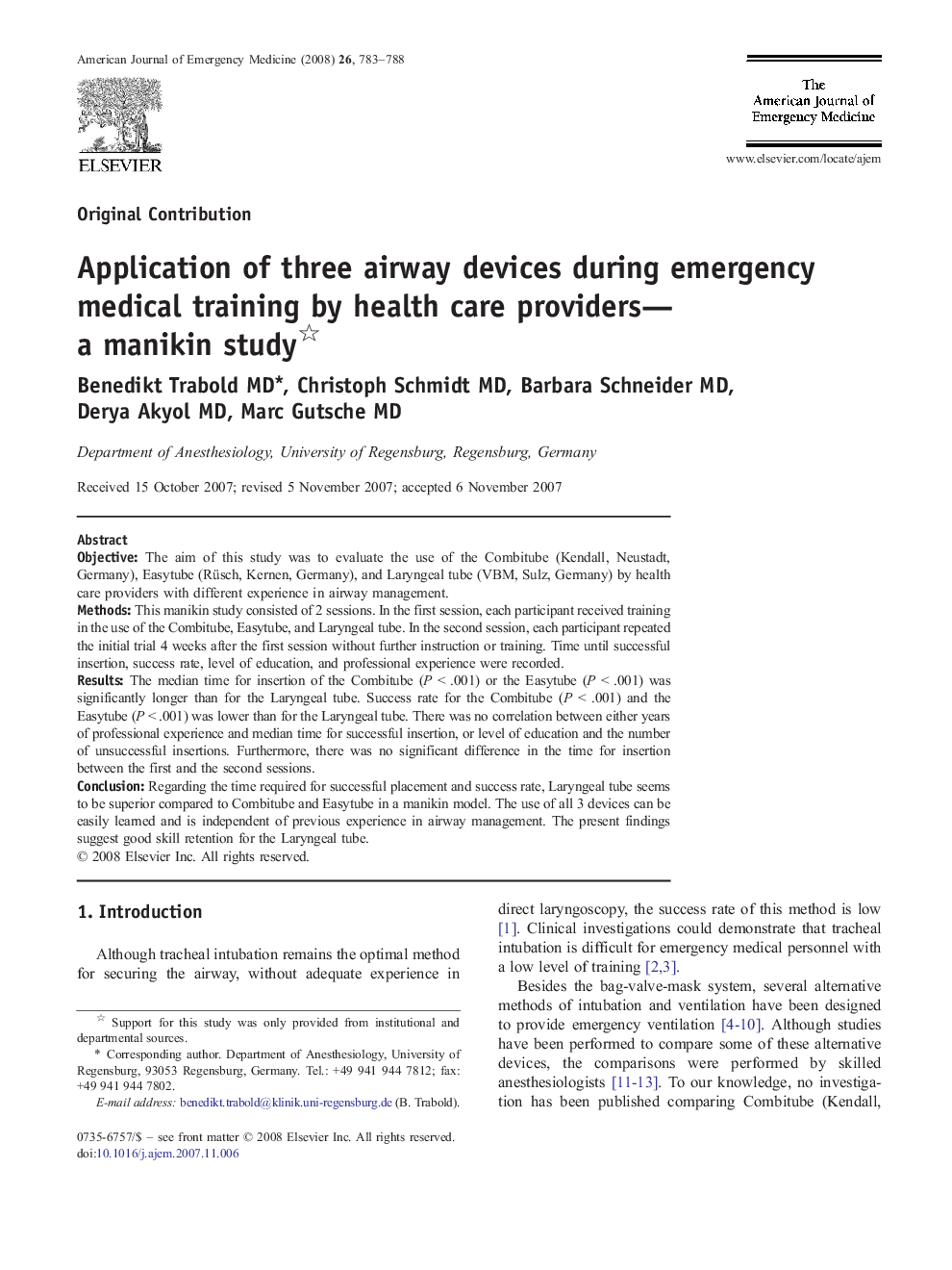| کد مقاله | کد نشریه | سال انتشار | مقاله انگلیسی | نسخه تمام متن |
|---|---|---|---|---|
| 3227217 | 1588173 | 2008 | 6 صفحه PDF | دانلود رایگان |

ObjectiveThe aim of this study was to evaluate the use of the Combitube (Kendall, Neustadt, Germany), Easytube (Rüsch, Kernen, Germany), and Laryngeal tube (VBM, Sulz, Germany) by health care providers with different experience in airway management.MethodsThis manikin study consisted of 2 sessions. In the first session, each participant received training in the use of the Combitube, Easytube, and Laryngeal tube. In the second session, each participant repeated the initial trial 4 weeks after the first session without further instruction or training. Time until successful insertion, success rate, level of education, and professional experience were recorded.ResultsThe median time for insertion of the Combitube (P < .001) or the Easytube (P < .001) was significantly longer than for the Laryngeal tube. Success rate for the Combitube (P < .001) and the Easytube (P < .001) was lower than for the Laryngeal tube. There was no correlation between either years of professional experience and median time for successful insertion, or level of education and the number of unsuccessful insertions. Furthermore, there was no significant difference in the time for insertion between the first and the second sessions.ConclusionRegarding the time required for successful placement and success rate, Laryngeal tube seems to be superior compared to Combitube and Easytube in a manikin model. The use of all 3 devices can be easily learned and is independent of previous experience in airway management. The present findings suggest good skill retention for the Laryngeal tube.
Journal: The American Journal of Emergency Medicine - Volume 26, Issue 7, September 2008, Pages 783–788